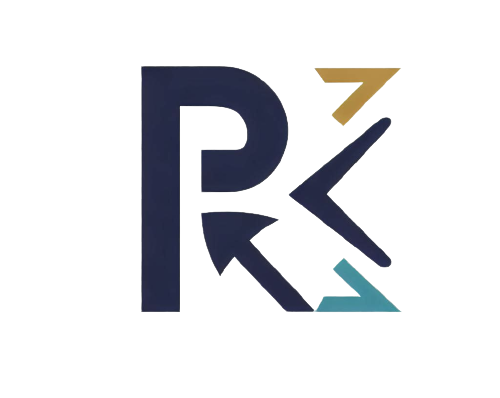When we think about Search Engine Optimization (SEO), we often focus on keywords, content quality, and backlinks. However, there’s an essential yet often overlooked aspect that can significantly impact your website’s SEO performance: HTTP status codes and errors. These technical elements play a crucial role in determining how search engines interact with your website and consequently impact your search rankings.
 At the heart of web communication lies the Hypertext Transfer Protocol (HTTP), a fundamental protocol that governs how data is transmitted between a user’s browser and a web server. HTTP status codes are three-digit numerical responses generated by a web server to indicate the outcome of a user’s request. They provide vital information about whether a requested page or resource has been successfully retrieved, redirected, or encountered an error. The first digit of these codes categorizes them into five classes, each signifying a distinct scenario.
At the heart of web communication lies the Hypertext Transfer Protocol (HTTP), a fundamental protocol that governs how data is transmitted between a user’s browser and a web server. HTTP status codes are three-digit numerical responses generated by a web server to indicate the outcome of a user’s request. They provide vital information about whether a requested page or resource has been successfully retrieved, redirected, or encountered an error. The first digit of these codes categorizes them into five classes, each signifying a distinct scenario.
Status codes in the 1xx range are informational in nature and indicate that the server has received the request and is processing it. They do play a role in ensuring smooth communication between the server and the browser, which in turn can impact user experience.
The 2xx status codes signify that a request has been successfully received, understood, and accepted. The most familiar of these is the 200 OK code, indicating that the requested resource has been successfully retrieved. This is the response webmasters hope for, as it indicates to both users and search engines that their page is functioning as intended. A website with a multitude of 2xx codes demonstrates reliability, which search engines often reward with improved rankings.
Status codes in the 3xx range denote redirection. When a resource has been moved or its URL has changed, web servers issue these codes to inform the browser about the new location. Proper use of 3xx codes ensures that users and search engine crawlers are seamlessly directed to the updated content, preventing the negative impact of broken links. By managing these codes effectively, webmasters can preserve the link equity and maintain a positive user experience, both of which are essential for SEO success.
HTTP status codes also help in avoiding duplicate content issues. If multiple URLs lead to the same content but have different URLs, search engines might consider them duplicate. Properly using “canonical” tags and “301 redirects” can help consolidate ranking signals to a single URL, preventing content dilution.
Client error codes in the 4xx range signal that the browser’s request cannot be fulfilled due to a problem on the user’s end or a client-side error. The most infamous of these is the 404 Not Found error, indicating that the requested resource doesn’t exist on the server. While 4xx errors are inevitable to some extent, their mismanagement can lead to a poor user experience and harm your SEO efforts. Regularly monitoring and rectifying these errors is a vital part of maintaining a healthy website.
The 5xx status codes point to errors that occur on the server side. These codes indicate that the server is having trouble fulfilling the request, often due to internal server errors or overloading. While not directly caused by webmasters, these errors can have a negative impact on SEO if they persist. Frequent occurrences of 5xx errors can signal poor website performance, discouraging both users and search engines from frequenting your site.
Search engine bots regularly crawl websites to index their content. If a bot encounters a series of “5xx Server Errors,” it might struggle to index your pages properly. This can result in missed opportunities for your content to rank in search results.
Common HTTP Status Codes and Their SEO Impact
404 Not Found. This error occurs when a page is not found. To mitigate its SEO impact, create custom 404 pages that provide relevant navigation options, helping users find the content they’re looking for.
When a user clicks on a link only to encounter a “404 Not Found” error. Such errors frustrate users and drive them away from your site. A negative user experience can lead to higher bounce rates and reduced session durations, both of which can negatively impact your SEO rankings.
301 Moved Permanently. This status code is used for permanent redirection. It’s valuable for SEO when you’ve updated a URL or migrated content. It transfers the ranking signals from the old URL to the new one.
This code is your best helper when it comes to preserving the SEO juice your old page had. When you use a 301 redirect, all the hard-earned SEO goodness from the old page gets passed on to the new one. Search engines will update their records and still give you credit for the old page’s authority.
302 Found. This code signifies temporary redirection. While useful in certain cases, it’s not recommended for permanent changes, as it doesn’t transfer ranking signals like a 301 redirect does.
While a 302 code is handy for temporary situations. It won’t transfer the SEO juice of the old page to the new one. If you’re making a permanent move, stick with 301 redirects to keep your SEO going.
503 Service Unavailable. When your server is temporarily down, this code is returned. While it’s understandable that servers can encounter issues, frequent and prolonged 503 errors can negatively impact your site’s SEO.
If your site frequently serves up this status code, search engines might get worried. They want to send users to reliable places. If your server takes too many breaks, your SEO ranking could start feeling bad.
Best Practices for Managing HTTP Status Codes and Errors
 Use tools like Google Search Console to monitor crawl errors and HTTP status codes. They give you the scoop on any HTTP errors that might be lurking around. This insight can help you quickly identify and address issues.
Use tools like Google Search Console to monitor crawl errors and HTTP status codes. They give you the scoop on any HTTP errors that might be lurking around. This insight can help you quickly identify and address issues.
When making changes to URLs or restructuring your website, use 301 redirects to maintain SEO value and guide users seamlessly. This is crucial for SEO because it transfers the SEO goodness from the old page to the new one. Search engines update their map, and users reach their destinations without any detours.
Create user-friendly 404 error pages that provide clear navigation options, helping users find relevant content. Not only do these pages keep visitors from bouncing off in frustration, but they also show search engines that you care about user experience. Include clear navigation and maybe even a bit of humor to keep your visitors engaged. A well-crafted 404 page can actually enhance your website’s personality.
Ensure your web server is reliable and can handle traffic spikes to avoid prolonged server errors. Frequent 503 errors can hurt your SEO. Search engines want to send users to places that work reliably. Partner with a reliable hosting provider that keeps your website up and running smoothly.
HTTP status codes and errors might seem like technical details, but they play a critical role in the success of your website’s SEO efforts. From enhancing user experience to aiding search engine crawlers, understanding and properly managing these codes can lead to better search engine rankings, improved user satisfaction, and an overall healthier online presence. Don’t underestimate the power of HTTP status codes—they’re a silent yet potent tool in your SEO arsenal.
